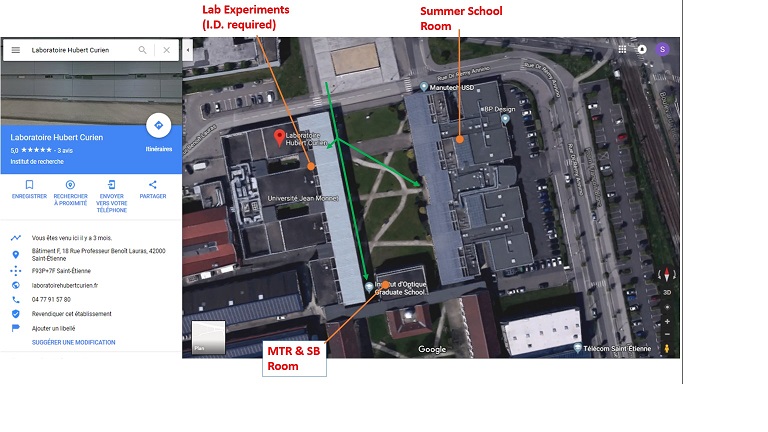RADSAGA - St Etienne Summer School
→
Europe/Zurich
Other Institutes
Other Institutes
University of Saint Etienne
https://laboratoirehubertcurien.univ-st-etienne.fr/en/maps-contact/maps.html
Laboratoire Hubert Curien, UMR CNRS 5516,
Bâtiment F 18 Rue du Professeur Benoît Lauras
42000 Saint-Etienne
FRANCE
Description
Date: 10 - 14 September 2018
Venue: University of Saint Etienne
Laboratoire Hubert Curien, UMR CNRS 5516,
Bâtiment F 18 Rue du Professeur Benoît Lauras
42000 Saint-Etienne
FRANCE
The rooms used during the Saint Etienne Summer School are resumed in the following map.

How to access the St Etienne University?
https://laboratoirehubertcurien.univ-st-etienne.fr/en/maps-contact/maps.html
Participants flying to the Lyon- airport, could also check for bus service like Ouibus (www.ouibus.com/) and Sprintair (http://sprintair.fr/).
Accommodation
Close to the rail station: Hotel Terminus
Simple and downtown, direct access by tram to the University: http://www.residhotel.com/st-etienne-centre.html.
Higher standards, 5 min taxi or car driving to the University:
Sonia Allegretti
Registration
Participants
Participants
Adam Remigiusz Labaza
Andrea Coronetti
Angela Guttilla
Arijit Karmakar
Daniel Paul Soderstrom
Jialei Wang
Kimmo Niskanen
Mohamed Mounir
Quentin Croenne
Rico Jossel Maestro
Salvatore Guagliardo
Sascha Andreas Ludeke
Sonia Allegretti
Tomasz Rajkowski
Vanessa Wyrwoll
Vincenzo De Michele
Ygor Quadros De Aguiar